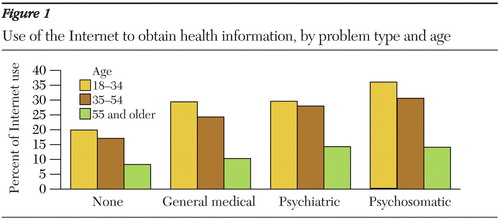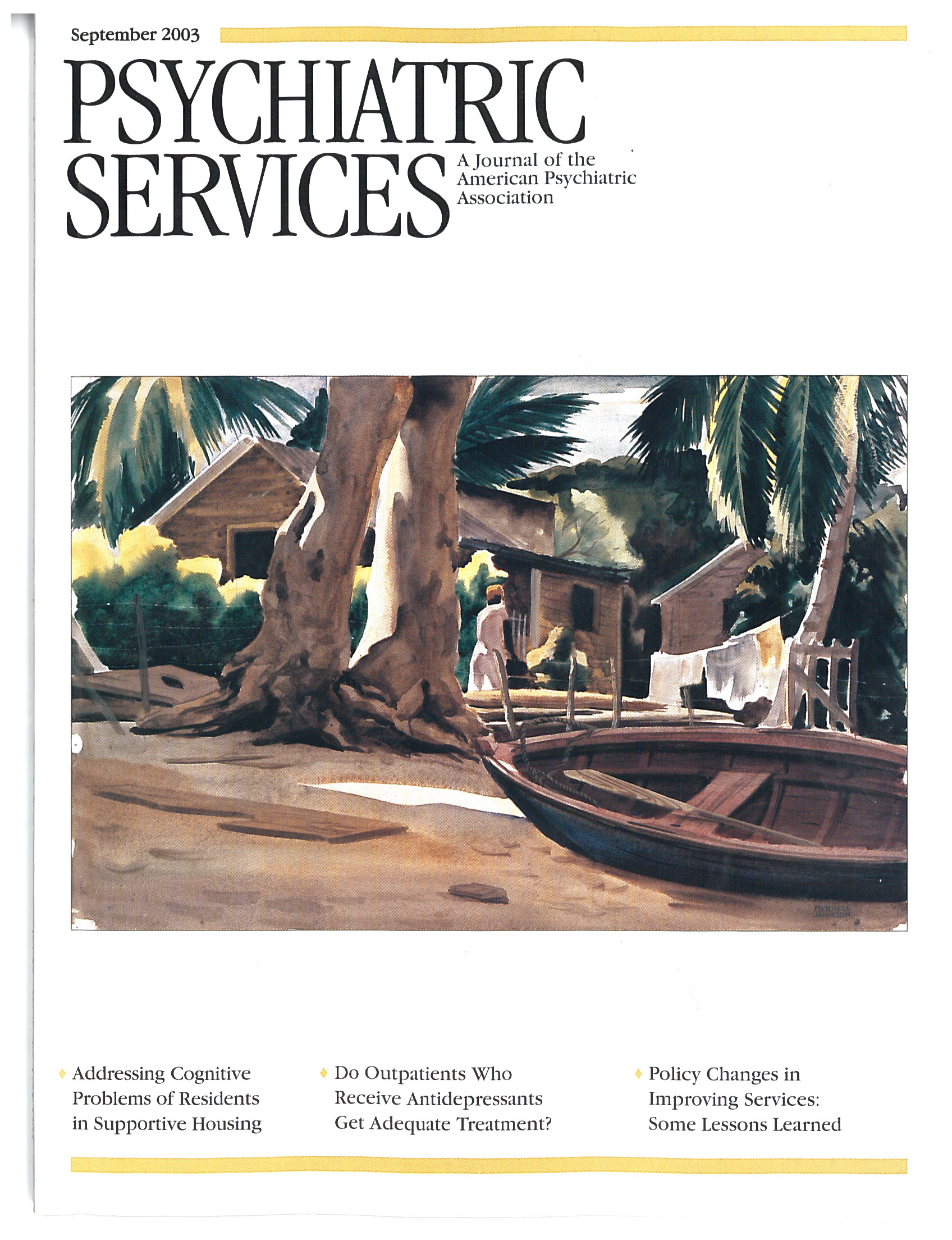Datapoints: Type of Illness and Use of the Internet for Health Information
We examined the relationship between general medical, psychiatric, and psychosomatic problems and use of the Internet for disease and wellness information, about which little is known. Data were taken from the 2001 Healthcare Market Guide Survey by the National Research Corporation (1), which was sent to 250,000 U.S. households. Responses were received from 152,208 households (61 percent).
We evaluated responses to two questions: "In the last 12 months, have you or someone in your household used the Internet to access disease/wellness information?" and "Has any household member been diagnosed as having any of the following ailments [check all that apply]?" This question was followed by a list of 30 problems, and from these we created four groups: none (no problems, N=28,495 respondents), general medical (cancer, diabetes, or heart disease and none of the other 27 problems, N=9,307), psychiatric (attention deficit, depression-anxiety, or an eating disorder and none of the other 27 problems, N=4,878), and psychosomatic (indigestion-irritable bowel or sciatica-chronic back pain and none of the other 28 problems, N=2,039).
We cross-tabulated Internet use and problem type, and the results are shown in Figure 1. Greater use of the Internet for health information was associated with having general medical, psychiatric, or psychosomatic problems (versus having none of these problems) and being younger. Gender and education also have been shown to be associated with Internet use; males have less use, and people with more education have more use (2). Therefore, we conducted a logistic regression analysis. The dependent variable was Internet use for health information, and the independent variables (all yes or no) were gender (male), age (18 to 34 years and 35 to 54), education (completed high school and some college and completed more than some college), and problem (general medical, psychiatric, and psychosomatic).
When the analysis controlled for other factors, general medical, psychiatric, and psychosomatic problems were significant predictors of Internet use for health information (p<.001; odds ratios [ORs] of 1.50, 1.81, and 2.08, respectively). The control variables also were significantly associated with use (p<.001). Associated with more use were age of 18 to 34 years (OR=2.65), age of 35 to 54 years (OR=2.25), completion of high school (OR=1.43), and completion of some college or more (OR=2.94). Being male was associated with less use (OR=.791).
We found that persons with psychosomatic problems reported the greatest use of the Internet for health information, followed by persons with psychiatric problems and persons with general medical problems. Differences may be attributable to better insurance coverage for general medical problems, which may lead persons with such problems to consult a physician for information rather than the Internet. Persons with psychosomatic problems may be less satisfied with treatments and therefore may use the Internet to seek information about other treatments. These explanations, however, are speculative. Clearly, we need more information about why people use the Internet for disease and wellness information, what they are learning, and how they use this information.
Dr. Haviland is affiliated with the department of psychiatry at Loma Linda University School of Medicine, 11374 Mountain View Avenue, Loma Linda, California 92354-3842 (e-mail, [email protected]). Dr. Pincus, who is coeditor of this column with Terri Tanielian, M.A., is with Rand and the department of psychiatry at the University of Pittsburgh School of Medicine. Dr. Dial is with the National Education Association in Washington, D.C.

Figure 1. Use of the Internet to obtain health information, by problem type and age
1. 2001 NRC Healthcare Market Guide Survey. Lincoln, Neb, National Research Corporation, 2001Google Scholar
2. Baker L, Wagner TH, Singer S, et al: Use of the Internet and e-mail for health care information. JAMA 289:2400–2406, 2003Crossref, Medline, Google Scholar



